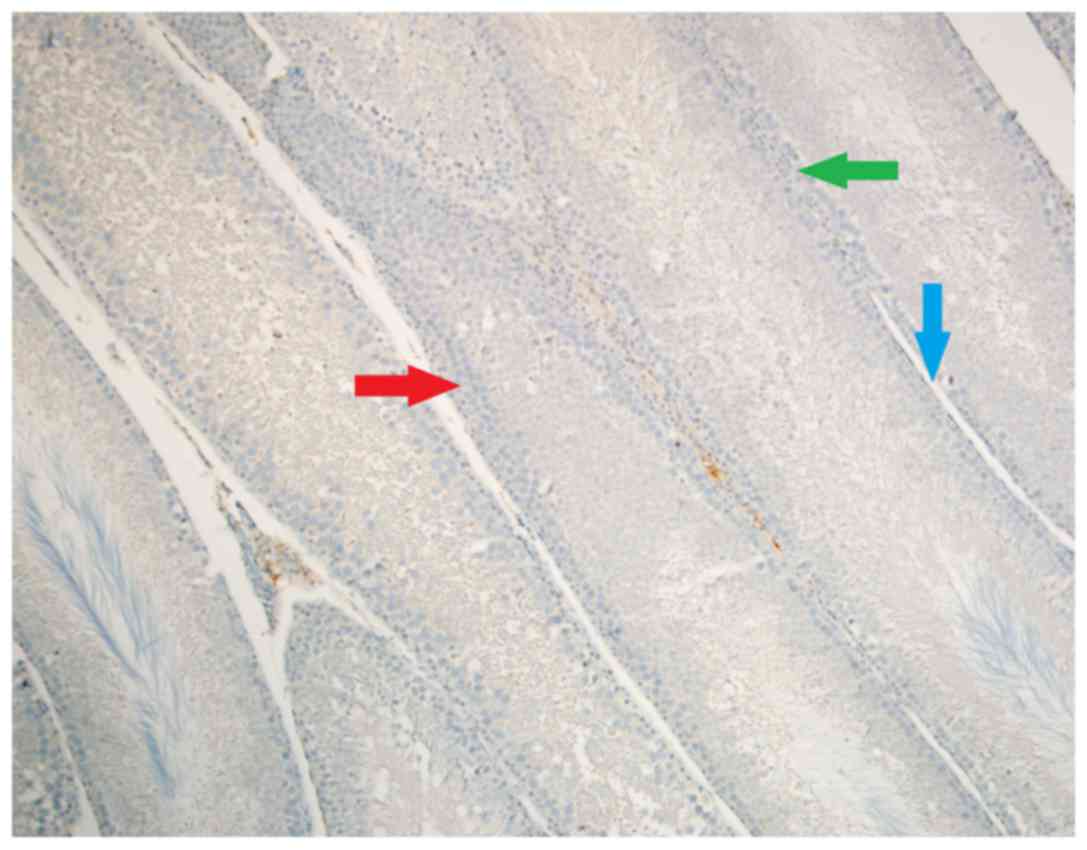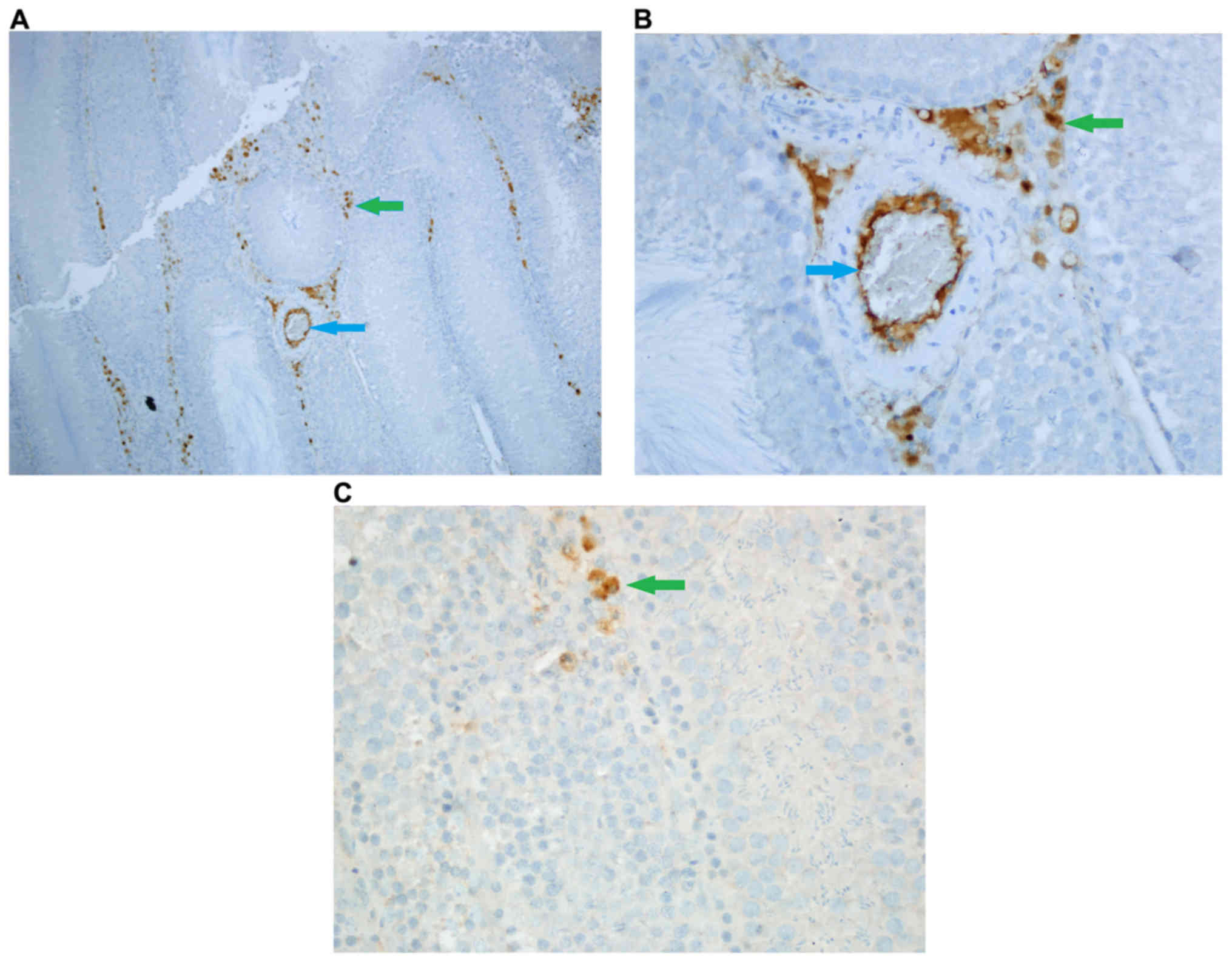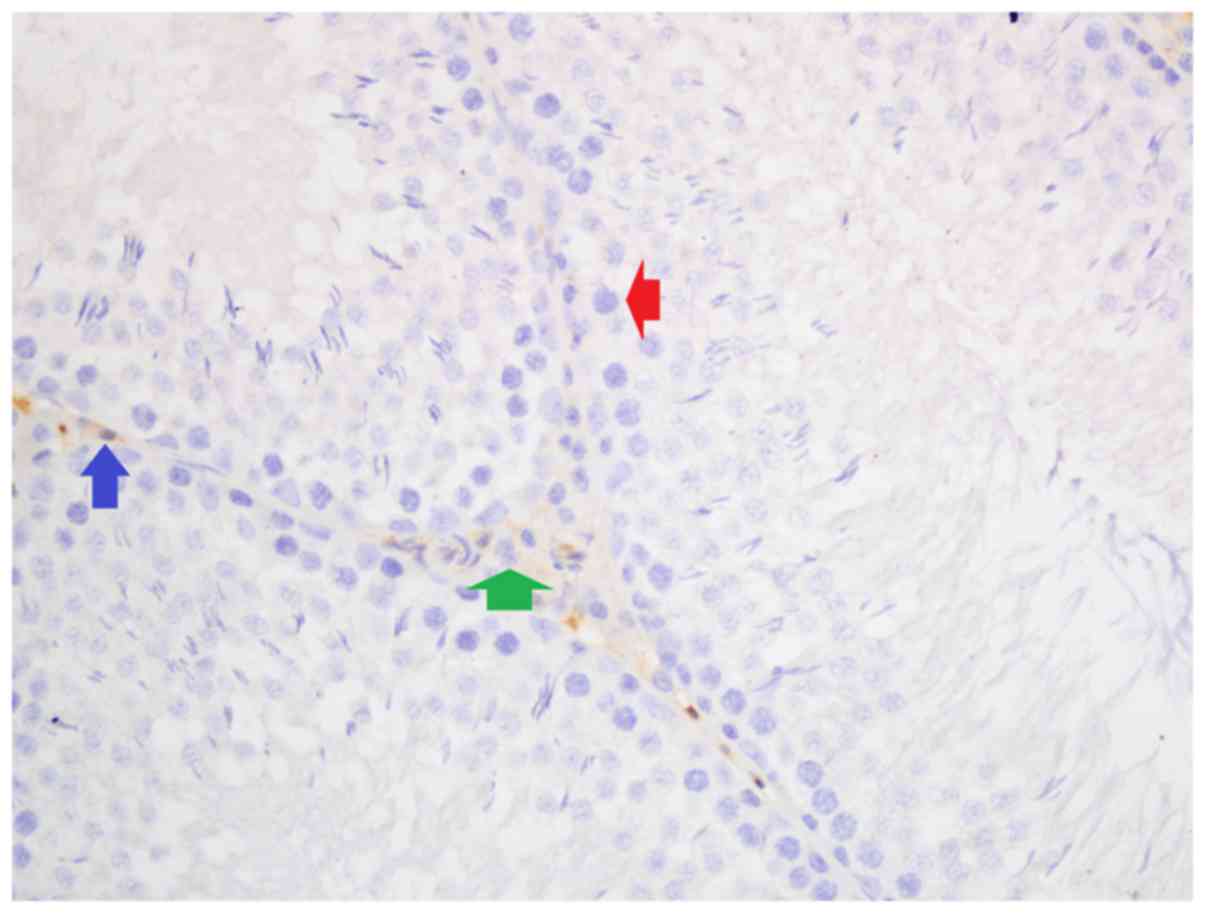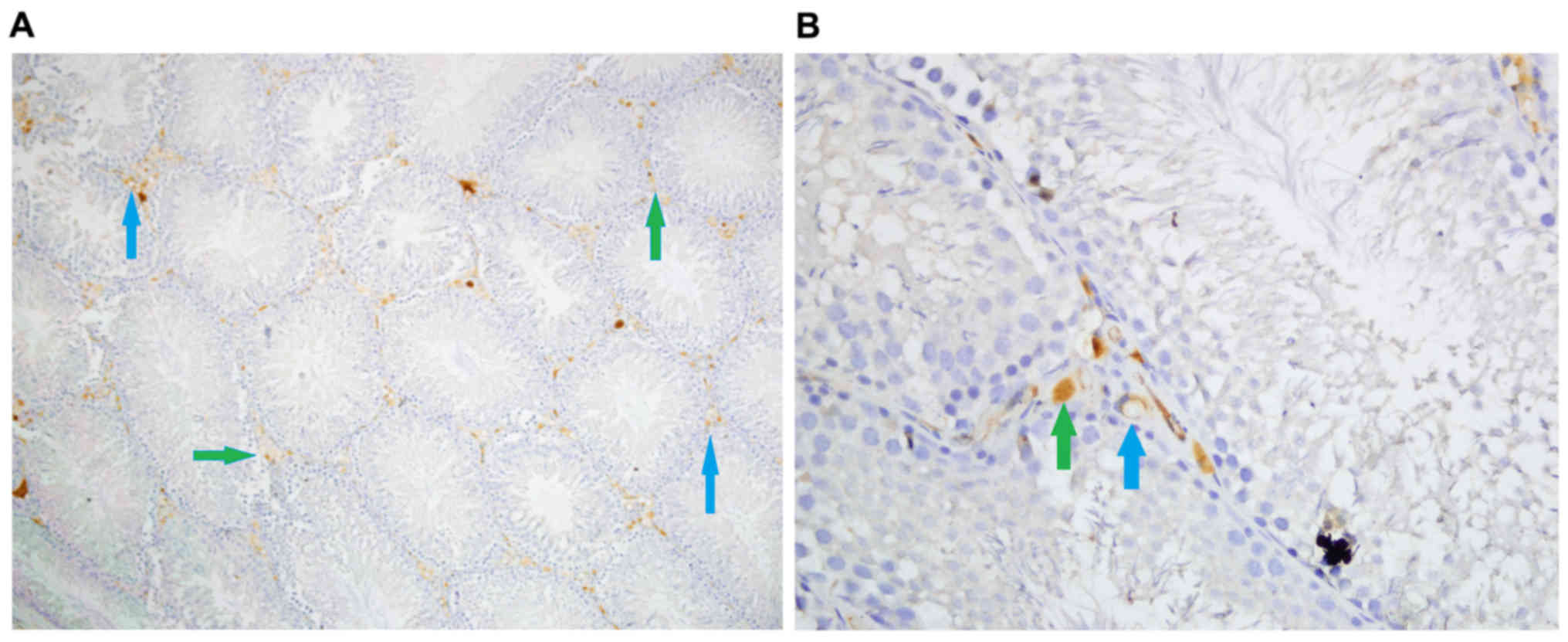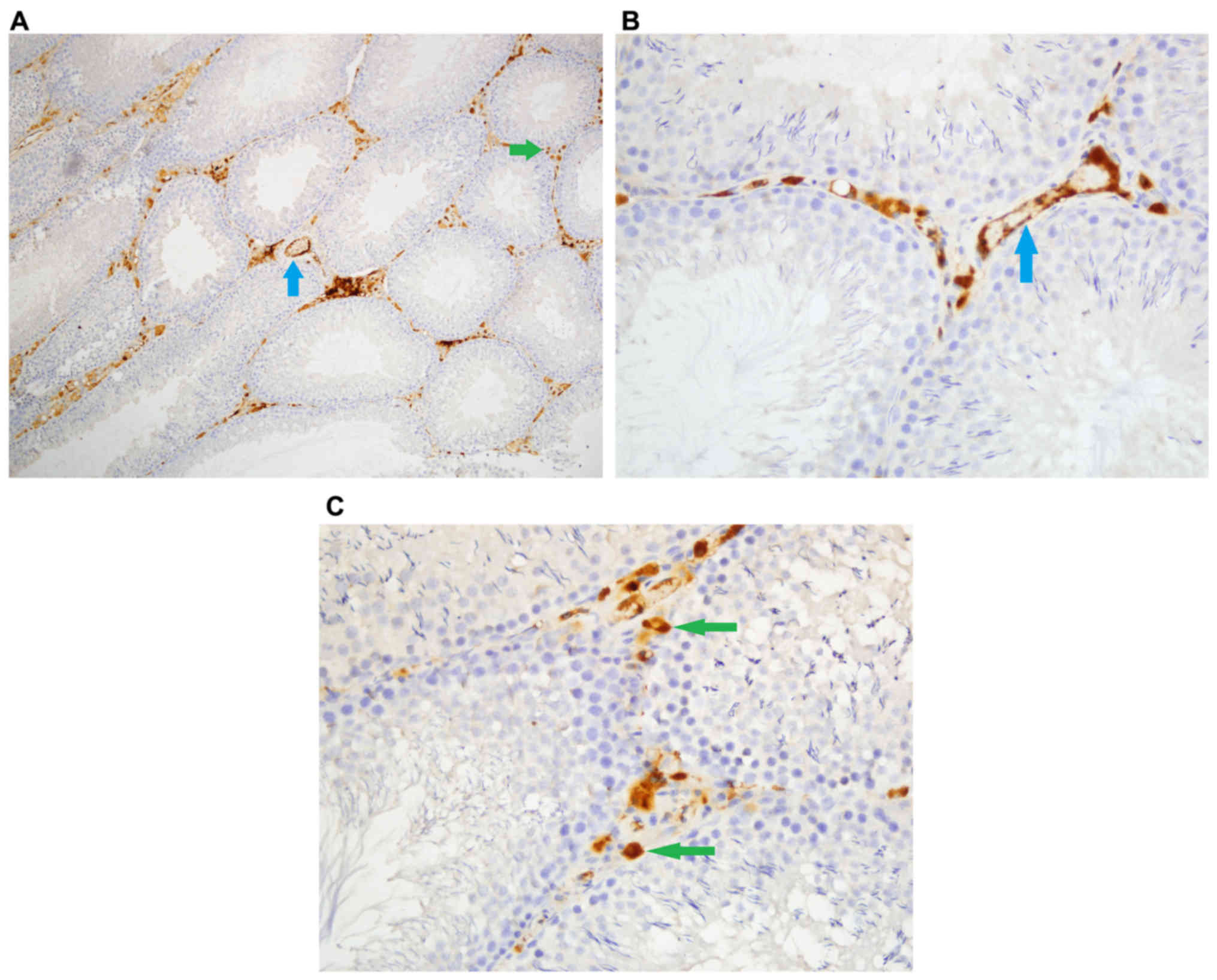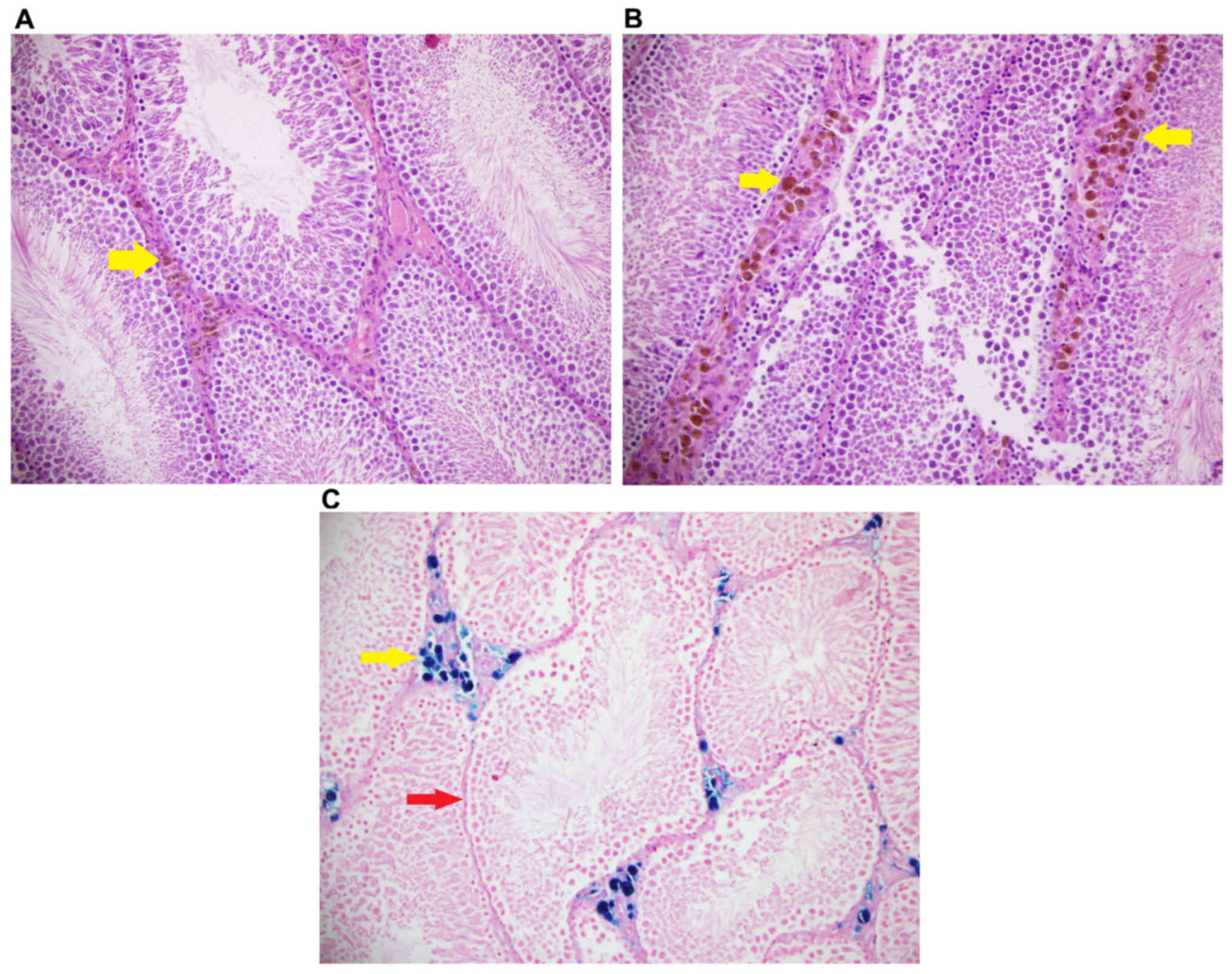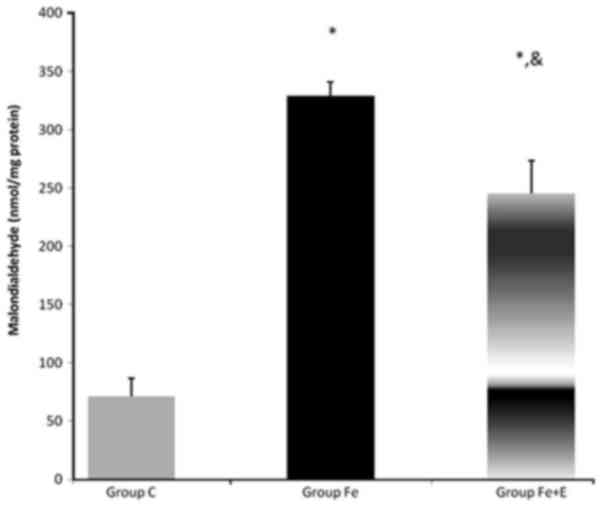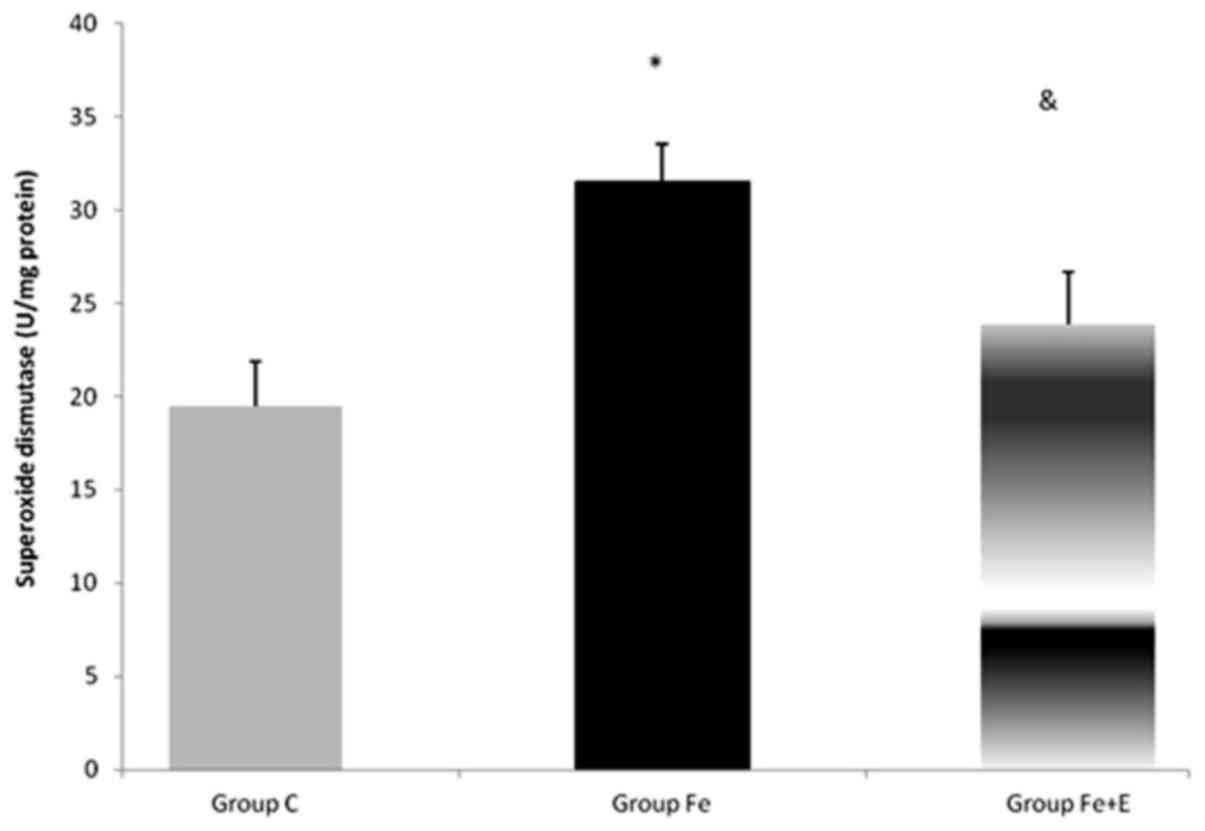|
1
|
Lieu PT, Heiskala M, Peterson PA and Yang
Y: The roles of iron in health and disease. Mol Asp Med. 22:1–87.
2001. View Article : Google Scholar
|
|
2
|
Mackenzie EL, Iwasaki K and Tsuji Y:
Intracellular iron transport and storage: From molecular mechanisms
to health implications. Antiox Redox Signal. 10:997–1030. 2008.
View Article : Google Scholar
|
|
3
|
Kohgo Y, Ikuta K, Ohtake T, Torimoto Y and
Kato J: Body iron metabolism and pathophysiology of iron overload.
Int J Hematol. 88:7–15. 2008. View Article : Google Scholar : PubMed/NCBI
|
|
4
|
Oerter KE, Kamp GA, Munson PJ, Nienhuis
AW, Cassorla FG and Manasco PK: Multiple hormone deficiencies in
children with hemochromatosis. J Clin Endocrinol Metab. 76:357–361.
1993. View Article : Google Scholar : PubMed/NCBI
|
|
5
|
Safarinejad MR: Evaluation of semen
quality, endocrine profile and hypothalamus-pituitary-testis axis
in male patients with homozygous beta-thalassemia major. J Urol.
179:2327–2332. 2008. View Article : Google Scholar : PubMed/NCBI
|
|
6
|
Lucesoli F, Caligiuri M, Roberti MF,
Perazzo JC and Fraga CG: Dose-dependent increase of oxidative
damage in the testes of rats subjected to acute iron overload. Arch
Biochem Biophys. 372:37–43. 1999. View Article : Google Scholar : PubMed/NCBI
|
|
7
|
Whittaker P, Dunkel VC, Bucci TJ, Kusewitt
DF, Thurman JD, Warbritton A and Wolff GL: Genome-linked toxic
responses to dietary iron overload. Toxicol Pathol. 25:556–564.
1997. View Article : Google Scholar : PubMed/NCBI
|
|
8
|
Chen MJ, Peng SS, Lu MY, Yang YL, Jou ST,
Chang HH, Chen SU, Lin DT and Lin KH: Effect of iron overload on
impaired fertility in male patients with transfusion dependent
beta-thalassemia. Pediatr Res. 83:655–661. 2018. View Article : Google Scholar : PubMed/NCBI
|
|
9
|
Leichtmann-Bardoogo Y, Cohen LA, Weiss A,
Marohn B, Schubert S, Meinhardt A and Meyron-Holtz EG:
Compartmentalization and regulation of iron metabolism proteins
protect male germ cells from iron overload. Am J Physiol Endocrinol
Metab. 302:E1519–E1530. 2012. View Article : Google Scholar : PubMed/NCBI
|
|
10
|
Gunel-Ozcan A, Basar MM, Kisa U and
Ankarali HC: Hereditary haemochromatosis gene (HFE) H63D mutation
shows an association with abnormal sperm motility. Mol Biol Rep.
36:1709–1714. 2009. View Article : Google Scholar : PubMed/NCBI
|
|
11
|
Anderson D, Schmid TE and Baumgartner A:
Male-mediated developmental toxicity. Asian J Androl. 16:81–88.
2014. View Article : Google Scholar : PubMed/NCBI
|
|
12
|
Lucesoli F and Fraga CG: Oxidative stress
in testes of rats subjected to chronic iron intoxication and
alpha-tocopherol supplementation. Toxicology. 132:179–186. 1999.
View Article : Google Scholar : PubMed/NCBI
|
|
13
|
Kokoszko A, Dabrowski J, Lewiński A and
Karbownik-Lewińska M: Protective effects of GH and IGF-I against
iron-induced lipid peroxidation in vivo. Exp Toxicol Pathol.
60:453–458. 2008. View Article : Google Scholar : PubMed/NCBI
|
|
14
|
Nakajima S, Numakawa T, Adachi N, Yoon HS,
Odaka H, Ooshima Y and Kunugi H: The inactivation of extracellular
signal-regulated kinase by glucagon-like peptide-1 contributes to
neuroprotection against oxidative stress. Neurosci Lett.
616:105–110. 2016. View Article : Google Scholar : PubMed/NCBI
|
|
15
|
Oshima N, Onimaru H, Matsubara H, Uchida
T, Watanabe A, Imakiire T, Nishida Y and Kumagai H: Direct effects
of glucose, insulin, GLP-1, and GIP on bulbospinal neurons in the
rostral ventrolateral medulla in neonatal wistar rats.
Neuroscience. 344:74–88. 2017. View Article : Google Scholar : PubMed/NCBI
|
|
16
|
Zhang X, Zhang Z, Zhao Y, Jiang N, Qiu J,
Yang Y, Li J, Liang X, Wang X, Tse G, et al: Alogliptin, a
dipeptidyl peptidase-4 inhibitor, alleviates atrial remodeling and
improves mitochondrial function and biogenesis in diabetic rabbits.
J Am Heart Assoc. 15:pii: e0059452017.
|
|
17
|
Li S, Wang X, Zhang J, Li J, Liu X, Ma Y,
Han C, Zhang L and Zheng L: Exenatide ameliorates hepatic steatosis
and attenuates fat mass and FTO gene expression through PI3K
signaling pathway in nonalcoholic fatty liver disease. Braz J Med
Biol Res. 51:e72992018. View Article : Google Scholar : PubMed/NCBI
|
|
18
|
Ceriello A, De Nigris V, Pujadas G, La
Sala L, Bonfigli AR, Testa R, Uccellatore A and Genovese S: The
simultaneous control of hyperglycemia and GLP-1 infusion normalize
endothelial function in type 1 diabetes. Diabetes Res Clin Pract.
114:64–68. 2016. View Article : Google Scholar : PubMed/NCBI
|
|
19
|
Oh YS and Jun HS: Effects of glucagon-like
peptide-1 on oxidative stress and Nrf2 signaling. Int J Mol Sci.
19:pii: E262017. View Article : Google Scholar
|
|
20
|
Petersen KE, Rakipovski G, Raun K and
Lykkesfeldt J: Does glucagon-like peptide-1 ameliorate oxidative
stress in diabetes? Evidence based on experimental and clinical
studies. Curr Diabetes Rev. 12:331–358. 2016. View Article : Google Scholar : PubMed/NCBI
|
|
21
|
Knop FK, Brønden A and Vilsbøll T:
Exenatide: Pharmacokinetics, clinical use, and future directions.
Expert Opin Pharmacother. 18:555–571. 2017. View Article : Google Scholar : PubMed/NCBI
|
|
22
|
Guide for the Care and Use of Laboratory
Animals published by the United States National Institutes of
Health. NIH Publication no. 85-23, revised. 1996.
|
|
23
|
Durak I, Canbolat O, Kavutçu M, Öztürk HS
and Yurtarslani Z: Activities of total, cytoplasmic, and
mitochondrial superoxide dismutase enzymes in sera and pleural
fluids from patients with lung cancer. J Clin Lab Anal. 10:17–20.
1996. View Article : Google Scholar : PubMed/NCBI
|
|
24
|
Van Ye TM, Roza AM, Pieper GM, Henderson J
Jr, Johnson CP and Adams MB: Inhibition of intestinal lipid
peroxidation does not minimize morphologic damage. J Surg Res.
55:553–558. 1993. View Article : Google Scholar : PubMed/NCBI
|
|
25
|
Bernheim F, Berheim ML and Wilbur KM: The
reaction between thiobarbituric acid and the oxidation products of
certain lipids. J Biol Chem. 174:257–264. 1948.PubMed/NCBI
|
|
26
|
Yagi K: A simple fluorometric assay for
lipoperoxide in blood plasma. Biochem Med. 15:212–216. 1976.
View Article : Google Scholar : PubMed/NCBI
|
|
27
|
Erbatur ME, Sezen ŞC, Bayraktar AC, Arslan
M, Kavutcu M and Aydın ME: Effects of dexmedetomidine on renal
tissue after lower limb ischemia reperfusion injury in
streptozotocin induced diabetic rats. Libyan J Med. 12:12700212017.
View Article : Google Scholar : PubMed/NCBI
|
|
28
|
Vaghasiya JD, Sheth NR, Bhalodia YS and
Jivani NP: Exaggerated liver injury induced by renal ischemia
reperfusion in diabetes: Effect of exenatide. Saudi J
Gastroenterol. 16:174–180. 2010. View Article : Google Scholar : PubMed/NCBI
|
|
29
|
Gezginci-Oktayoglu S, Sacan O, Yanardag R,
Karatug A and Bolkent S: Exendin-4 improves hepatocyte injury by
decreasing proliferation through blocking NGF/TrkA in diabetic
mice. Peptides. 32:223–231. 2011. View Article : Google Scholar : PubMed/NCBI
|
|
30
|
Zhang E, Xu F, Liang H, Yan J, Xu H, Li Z,
Wen X and Weng J: GLP-1 receptor agonist exenatide attenuates the
detrimental effects of obesity on inflammatory profile in testis
and sperm quality in mice. Am J Reprod Immunol. 74:457–466. 2015.
View Article : Google Scholar : PubMed/NCBI
|
|
31
|
Jervis KM and Robaire B: The effects of
long-term vitamin E treatment on gene expression and oxidative
stress damage in the aging Brown Norway rat epididymis. Biol
Reprod. 71:1088–1095. 2004. View Article : Google Scholar : PubMed/NCBI
|
|
32
|
Suzuki N and Sofikitis N: Protective
effects of antioxidants on testicular functions of varicocelized
rats. Yonago Acta Med. 42:87–94. 1999.
|
|
33
|
Ahangarpour A, Oroojan AA and Heidari H:
Effects of exendin-4 on male reproductive parameters of D-galactose
induced aging mouse model. World J Mens Health. 32:176–183. 2014.
View Article : Google Scholar : PubMed/NCBI
|
|
34
|
Feinstein-Rotkopf Y and Arama E: Can't
live without them, can live with them: Roles of caspases during
vital cellular processes. Apoptosis. 14:980–995. 2009. View Article : Google Scholar : PubMed/NCBI
|
|
35
|
Elmore S: Apoptosis: A review of
programmed cell death. Toxicol Pathol. 35:495–516. 2007. View Article : Google Scholar : PubMed/NCBI
|
|
36
|
Hikim Sinha AP, Lue Y, Diaz-Romero M, Yen
PH, Wang C and Swerdloff RS: Deciphering the pathways of germ cell
apoptosis in the testis. J Steroid Biochem Mol Biol. 85:175–182.
2003. View Article : Google Scholar : PubMed/NCBI
|















